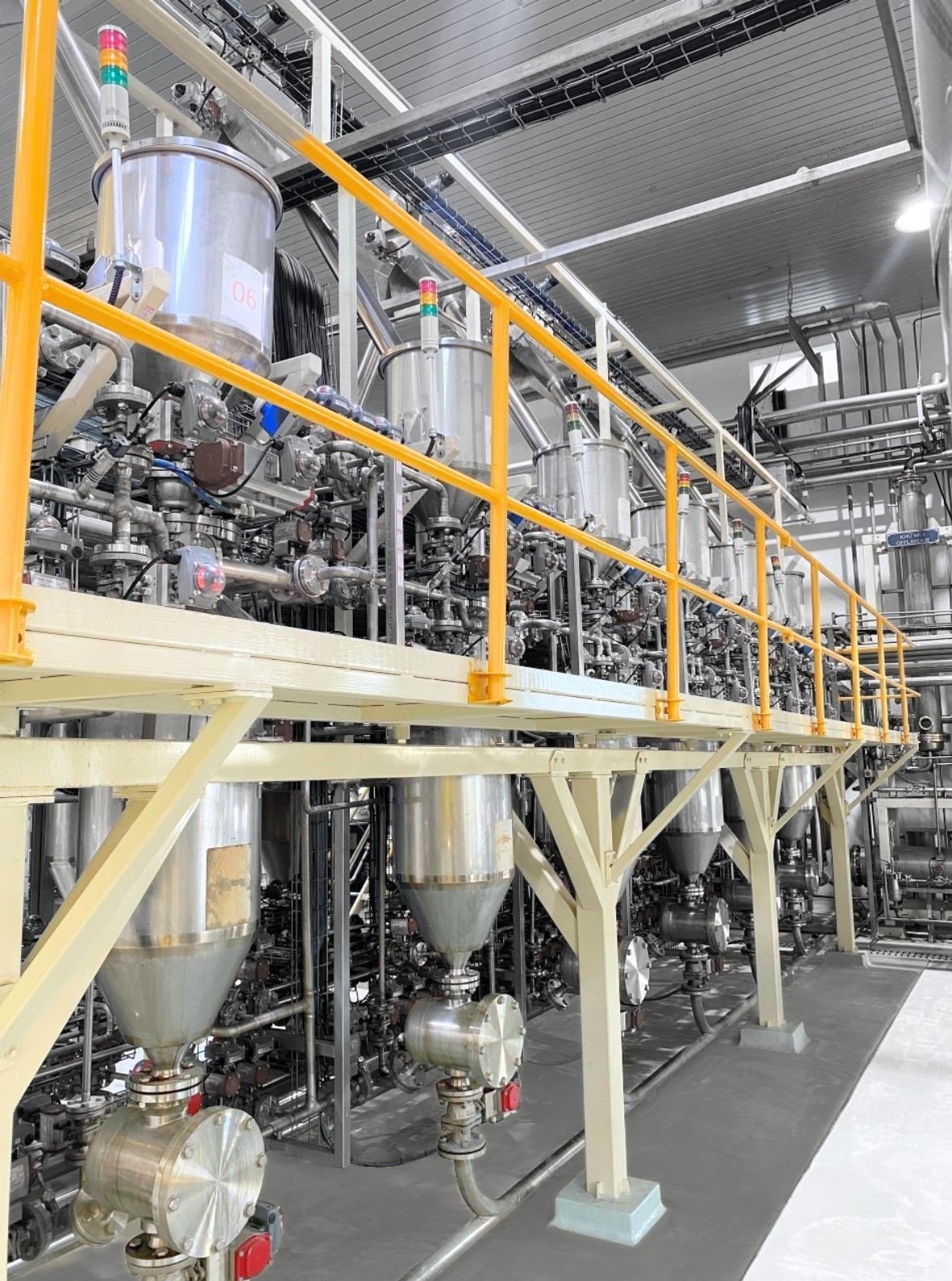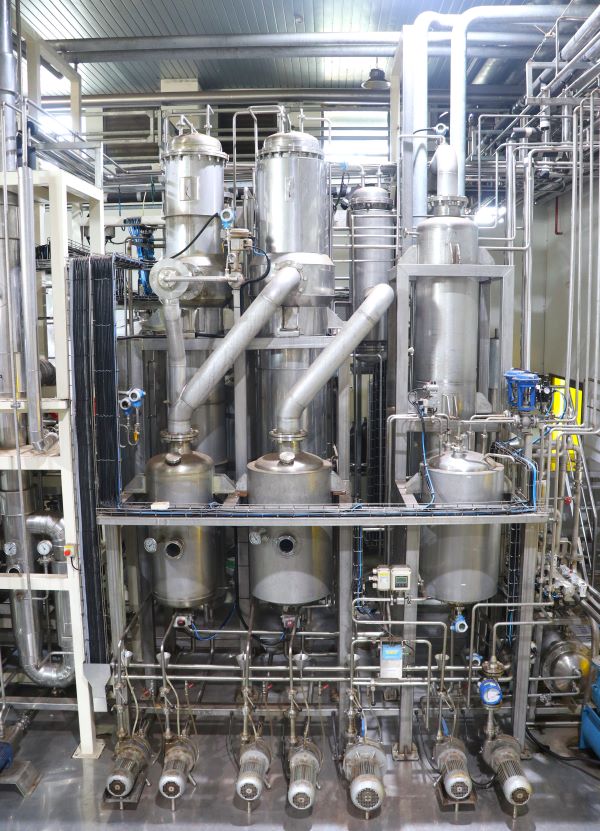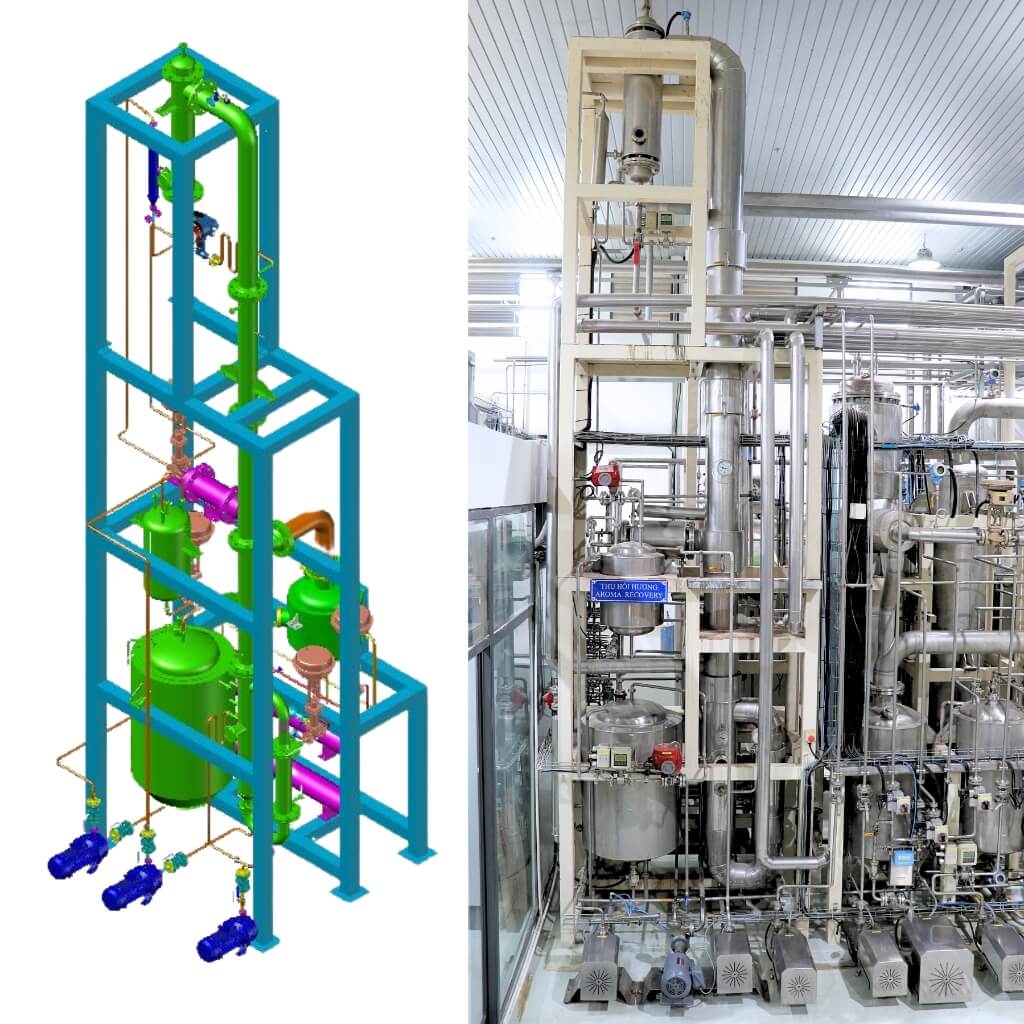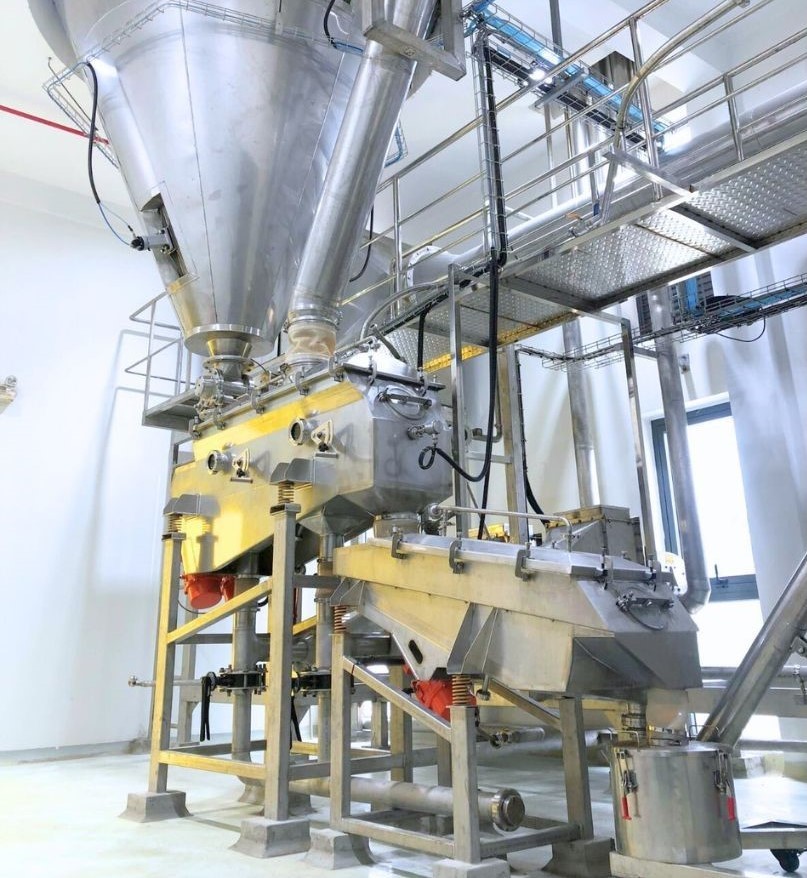Soluble coffee plants are revolutionizing the coffee industry, meeting our insatiable demand for convenient, quality coffee. These high-tech facilities are where the magic happens, turning roasted coffee beans into the instant granules we know and love.
But here’s the kicker: these plants aren’t just about speed and convenience. They’re at the forefront of innovation, pushing the boundaries of efficiency, sustainability, and product quality. From cutting-edge tech to eco-friendly practices, soluble coffee plants are reshaping how we produce and consume our beloved brew.
Ready to dive into the fascinating world of soluble coffee production? Let’s explore how these plants are stirring up the future of the coffee industry.
What is an Instant Coffee Plant?
An instant coffee plant is a specialized facility where coffee beans are processed to produce soluble coffee, commonly known as instant coffee. Unlike traditional coffee brewing methods, which involve grinding and brewing roasted coffee beans, instant coffee plants transform the beans into a soluble form that can be easily dissolved in hot water, offering the convenience of a quick cup of coffee.
But what exactly goes down in these caffeine factories?
Soluble coffee plants are the backbone of instant coffee production. They take whole coffee beans and transform them into those convenient granules or powder that dissolve instantly in your mug. It’s like a coffee bean’s journey from farm to cup, but with a high-tech twist.
Instant coffee plants employ advanced technologies and processes, including extraction, evaporation, aroma recovery, and drying. These methods ensure that the final product retains the desired flavor profile and aroma, despite undergoing several stages of processing.
Learn more about the components of a Instant Coffee Processing Plant.
But here’s the real kicker: soluble coffee plants aren’t just about churning out instant coffee. They’re hotbeds of innovation, constantly pushing the envelope to improve efficiency, sustainability, and product quality. And that’s where things get really interesting.
Core Processes at an Instant Coffee Plant
Producing soluble coffee involves several key steps that convert roasted coffee beans into instant coffee granules. Let’s take a detailed look at each process.
Instant Coffee Extraction
Extraction is the first step in creating soluble coffee. The roasted and ground coffee beans are treated with hot water under pressure to dissolve the soluble solids and aromatic compounds. The resulting liquid, known as the coffee extract, contains all the desired flavors and aromas.
- Extraction Optimization: Temperature control and pressure settings are crucial in maximizing the extraction efficiency while preventing the loss of flavor. This step is akin to brewing coffee, but on a much larger scale.
Concentration through Evaporation
Once the coffee extract is obtained, it needs to be concentrated to reduce its water content. Evaporation is used to achieve this, where the liquid extract is heated under controlled conditions to remove excess water.
- Energy Efficiency: Modern evaporation systems incorporate heat recovery techniques to minimize energy consumption, making the process more sustainable.
Aroma Recovery
One of the challenges in instant coffee production is preserving the natural aroma of coffee. Aroma recovery systems capture the volatile compounds released during the extraction and evaporation processes. These aromatic compounds are then reintroduced to the coffee extract before drying, ensuring that the final product retains its characteristic coffee aroma.
Drying Methods: Freeze Drying vs. Spray Drying
The concentrated coffee extract must be dried to produce instant coffee granules. There are two primary methods used in instant coffee plants:
- Freeze Drying: This method involves freezing the concentrated extract and then sublimating the ice under vacuum, resulting in high-quality coffee granules. Freeze drying is known for preserving the coffee’s flavor but is more expensive than other methods.
- Spray Drying: Spray drying is a more cost-effective method that involves atomizing the coffee extract into fine droplets, which are then dried using hot air. Although slightly less effective at preserving flavor compared to freeze drying, spray drying is widely used due to its lower cost and higher efficiency.
Comparison Table: Traditional Coffee vs. Soluble Coffee Production
| Aspect | Traditional Coffee Production | Soluble Coffee Production (Instant Coffee) |
|---|---|---|
| Process | Grinding, brewing, and consuming fresh coffee. | Involves extraction, drying (spray or freeze-drying), and packaging. |
| Convenience | Requires time for grinding and brewing. | Quick and easy preparation; just add hot water. |
| Shelf Life | Shorter; needs airtight storage to stay fresh. | Longer shelf life due to the drying process and vacuum sealing. |
| Aroma and Flavor Preservation | High, especially with freshly ground beans. | Uses aroma recovery technology to enhance aroma. |
| Energy Consumption | Lower energy used in small-scale brewing. | Uses more energy in drying, but innovations are reducing this. |
| Sustainability Initiatives | Focus on organic farming and fair-trade practices. | Increasing focus on eco-friendly production technologies. |
| Scalability | Limited by brewing capacity and shelf life. | Highly scalable with global distribution. |
Key Technologies and Equipment at an Instant Coffee Plant
An instant coffee plant is equipped with specialized machinery and technology designed to enhance efficiency and product quality. The core technologies include:
- High-Pressure Extraction Systems: To optimize flavor extraction.
- Energy-Efficient Evaporation Units: To concentrate the coffee extract while minimizing energy consumption.
- Aroma Recovery Units: For capturing and reintegrating coffee aroma.
- Freeze Dryers and Spray Dryers: To produce high-quality soluble coffee granules.
Innovative equipment ensures that the entire process is carried out with precision, reducing waste and energy usage while maximizing flavor retention.
Process Innovations: Making Coffee Smarter
Operational Flexibility: Gone are the days of one-size-fits-all production lines. Modern soluble coffee plants are like chameleons, able to adapt their production processes on the fly. Take the Starbucks Soluble Coffee Plant in Augusta, Georgia, for example. According to Stellar, the company that expanded the facility, it’s designed with flexibility in mind. This means they can switch between different product types or adjust production volumes without missing a beat. It’s like having a Swiss Army knife of coffee production at your fingertips.
Know More:- industrial coffee grinder | commercial coffee roaster machine | wood chip burner
Nitrogen Blanketing: Ever opened a bag of coffee and been hit with that heavenly aroma? Well, oxygen is the enemy of that freshness. That’s where nitrogen blanketing comes in. By using nitrogen gas during the manufacturing process, soluble coffee plants can prevent oxidation and keep the coffee tasting fresh. It’s like giving each coffee granule its own personal force field against staleness.
Temperature Control Systems: Getting the temperature just right is crucial in coffee making, whether you’re brewing a single cup or running a massive soluble coffee plant. Advanced temperature control systems ensure optimal conditions for extraction and drying. This not only reduces energy consumption (hello, lower carbon footprint!) but also helps preserve the coffee’s flavor. It’s like having a master barista overseeing every step of the process, but on an industrial scale.
Sustainable Practices: Green Coffee, Clean Planet
Energy-Efficient Processes: Soluble coffee plants are getting a green makeover. From energy-efficient machinery to smart process design, these plants are finding ways to reduce their energy consumption. It’s not just good for the planet; it’s good for the bottom line too.
Water Usage and Recycling: Coffee production is traditionally a water-intensive process. But innovative soluble coffee plants are turning the tide. They’re implementing water recycling systems and finding ways to reduce water waste. It’s like giving each drop of water multiple jobs before it leaves the plant.
Waste Reduction and Byproduct Utilization: Remember those coffee grounds left over after extraction? They’re not going to waste. Many plants are finding creative uses for these byproducts, from biofuel to compost. According to Sucafina, a leading green coffee trader, some facilities are even using coffee grounds to generate energy for the plant itself. Talk about a caffeine kick for sustainability!
These innovations aren’t just cool tech for tech’s sake. They’re reshaping the soluble coffee industry, making it more efficient, sustainable, and capable of meeting our ever-growing demand for instant coffee. But the innovation doesn’t stop here. Let’s take a globe-trotting tour of some leading soluble coffee plants to see these innovations in action.
Leading Soluble Coffee Plants Around the World
Ready for a virtual world tour? Buckle up, coffee lovers! We’re about to jet-set to some of the most advanced soluble coffee plants on the planet. These facilities aren’t just producing instant coffee; they’re redefining what’s possible in coffee production.
Starbucks Soluble Coffee Plant: A Georgian Gem
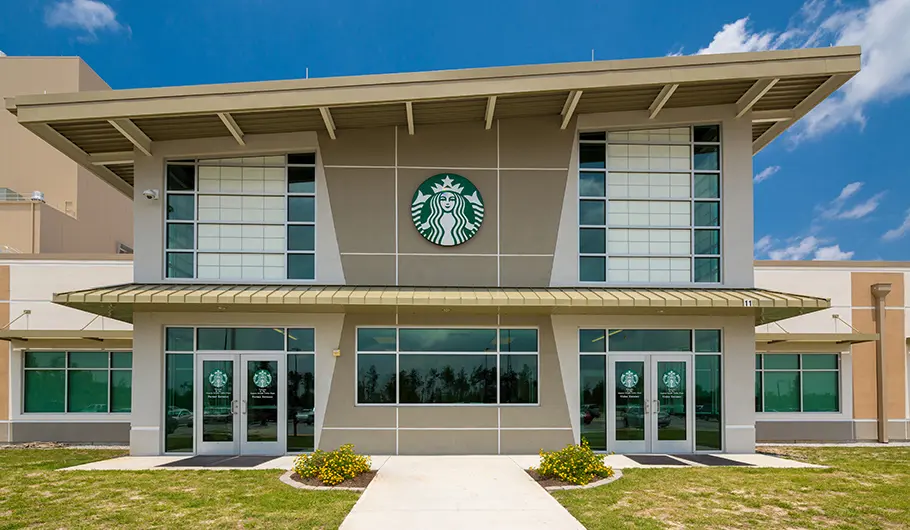
Starbucks Soluble Coffee Plant
First stop: Augusta, Georgia, home to Starbucks’ state-of-the-art soluble coffee plant. This isn’t your average coffee factory – it’s more like a coffee theme park for tech enthusiasts.
According to Stellar, the company behind the plant’s expansion, this facility is a game-changer in Starbucks’ global supply chain. It’s massive, it’s efficient, and it’s churning out instant coffee products for the coffee giant’s global market.
But size isn’t everything. What really sets this plant apart is its cutting-edge technology and commitment to sustainability. We’re talking about advanced automation, energy-efficient systems, and water conservation measures that would make Captain Planet proud.
FoodManufacturing reports that this plant isn’t just about production – it’s a living laboratory for coffee innovation. From developing new instant coffee products to refining production processes, this facility is helping shape the future of soluble coffee.
Café Outspan: Vietnam’s Coffee Colossus
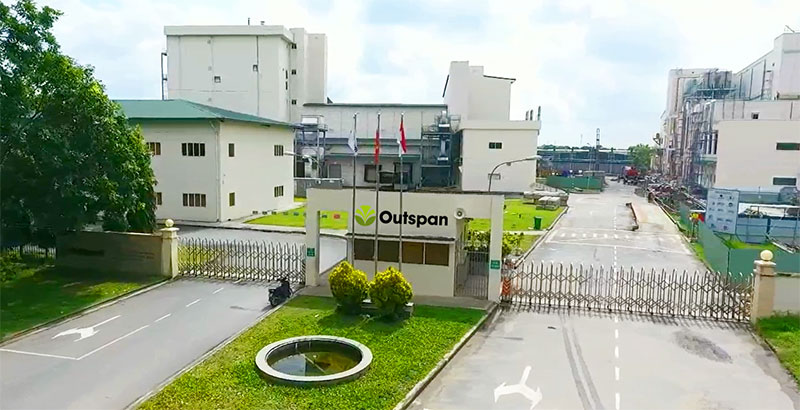
Café Outspan Soluble Coffee Plant
Next, we’re jetting off to Ho Chi Minh City, Vietnam, home of the Café Outspan facility. Brace yourselves, coffee fans, because this is Southeast Asia’s largest independent soluble coffee plant.
According to OFI (Olam Food Ingredients), this facility is a high-tech marvel. It’s not just big; it’s smart. The plant uses advanced manufacturing processes to ensure consistent quality across huge production volumes.
But why Vietnam, you ask? It’s all about location, location, location. Vietnam is one of the world’s largest coffee producers, especially for Robusta beans often used in instant coffee. By placing a massive soluble coffee plant right in the heart of coffee country, Café Outspan has positioned itself strategically in the global coffee market.
This plant isn’t just serving the local market. It’s a key player in meeting the growing demand for instant coffee across Asia and beyond. It’s like a caffeinated United Nations, bringing the world together one cup of instant coffee at a time.
These leading plants aren’t just impressive in their own right. They’re also setting the standard for the future of soluble coffee production. Speaking of the future, let’s gaze into our crystal coffee mug and see what’s brewing on the horizon for soluble coffee plants.
The Future of Soluble Coffee Plant
Alright, coffee futurists, it’s time to put on our prediction hats and explore what’s percolating in the world of soluble coffee plants. Spoiler alert: the future looks as rich and invigorating as a perfectly brewed cup of joe.
Bringing Production to the Source
Here’s a trend that’s gaining steam: soluble coffee plants are packing their bags and moving closer to coffee-growing regions. But why the change of address?
According to Sucafina, this move is all about cutting costs and carbon footprints. By setting up shop closer to coffee farms, these plants can reduce transportation costs and emissions. It’s like farm-to-table, but for instant coffee.
But the benefits don’t stop there. This shift is also great news for local economies in coffee-producing countries. We’re talking about new jobs, increased demand for local coffee, and a boost to the local economy. It’s a win-win situation that’s giving a whole new meaning to “locally sourced” coffee.
Consumer Trends Stirring Up Production
Remember when instant coffee was just… instant coffee? Those days are long gone. Today’s coffee drinkers are a discerning bunch, and their evolving tastes are reshaping how soluble coffee plants operate.
Organic and single-origin instant coffees are no longer niche products – they’re becoming the norm. This means soluble coffee plants are having to up their game, investing in new technologies and processes to meet these demands.
But here’s where it gets really exciting: automation and AI are entering the scene in a big way. These technologies are ensuring consistency and quality across massive production volumes. Imagine AI systems monitoring every step of the production process, making real-time adjustments to ensure each batch of instant coffee is perfect. It’s like having a robot barista, but on an industrial scale.
Challenges and Opportunities for Instant Coffee Plants
Now, it’s not all smooth sailing in the world of soluble coffee plants. There are some hefty challenges on the horizon, but with challenges come opportunities. Let’s break it down:
Sustainability Pressures: The Big Green Challenge
The elephant in the room? Sustainability. As demand for instant coffee grows, so does the pressure to produce it in eco-friendly ways. Soluble coffee plants are facing the challenge of balancing increased production with environmental concerns.
Know More:- tower dryer | wood chip drying system | aroma recovery
But here’s the silver lining: this pressure is driving innovation. We’re seeing plants invest in everything from renewable energy sources to water recycling systems. It’s turning the coffee industry green, one soluble coffee plant at a time.
Economic Factors: The Price of Progress
Setting up a high-tech, sustainable soluble coffee plant isn’t cheap. These facilities require significant upfront investment, which can be a hurdle, especially in developing markets.
However, this challenge is also creating opportunities for partnerships and investments. We’re seeing coffee giants team up with local producers, sharing knowledge and resources to establish state-of-the-art facilities around the world.
Opportunities for Innovation: The Exciting Part
Now, let’s talk about the fun stuff – the opportunities for innovation that are making coffee geeks giddy with excitement.
Further Automation: AI and robotics are set to play an even bigger role in soluble coffee production. We’re talking about smart factories that can adjust production in real-time based on demand forecasts. It’s like having a crystal ball for coffee production.
New Product Formats: The instant coffee of tomorrow might look very different from what we’re used to. Think ready-to-drink soluble coffee products or even instant coffee tablets. The only limit is imagination (and food science, of course).
As we wrap up our whirlwind tour of soluble coffee plants, one thing is clear: this industry is anything but instant. It’s constantly evolving, innovating, and rising to meet new challenges. From cutting-edge technology to sustainable practices, soluble coffee plants are brewing up a future that’s efficient, eco-friendly, and downright exciting.
Know More:- industrial pepper processing system
So, the next time you stir up a cup of instant coffee, take a moment to appreciate the incredible journey it’s been on. From high-tech plants to your kitchen, it’s a testament to human ingenuity and our never-ending quest for a better cup of joe.
Now, if you’ll excuse me, all this talk of coffee has me craving a cup. Instant, of course – I’ve got an article to finish!
Want to learn more about the fascinating world of coffee production? Check out our blog posts on sustainable coffee farming practices and the benefits of instant coffee. And if you’re curious about the nitty-gritty of soluble coffee plants, don’t miss these in-depth articles from Stellar, OFI, Sucafina, and FoodManufacturing.
Remember, in the world of soluble coffee, the future is now – and it’s looking mighty tasty!
To learn more about the equipment used in instant coffee production, check out these links:
- Instant coffee plant
- Instant coffee extraction
- Instant coffee evaporation
- Instant coffee aroma recovery
- Instant coffee spray dryer
FAQ
Q1: What exactly is a soluble coffee plant?
A: A soluble coffee plant is a specialized facility where coffee beans are processed to create instant coffee. It involves extracting soluble solids from brewed coffee, followed by drying techniques such as spray-drying or freeze-drying to produce coffee powder or granules.
Q2: How does instant coffee maintain its flavor and aroma?
A: Soluble coffee plants use technologies like aroma recovery and nitrogen blanketing. Aroma recovery captures volatile compounds that provide coffee’s signature scent, which are then reintroduced to the final product. Nitrogen blanketing helps preserve freshness by reducing oxygen exposure.
Q3: What are the sustainability practices in soluble coffee production?
A: Sustainable practices include using energy-efficient drying methods, reducing water waste, and incorporating eco-friendly packaging. Some plants are also located closer to coffee-growing regions to minimize transportation emissions.
Q4: Are there any quality differences between freeze-dried and spray-dried instant coffee?
A: Yes, freeze-dried instant coffee typically retains more of the original flavor and aroma compared to spray-dried coffee. Freeze-drying is a gentler process that preserves the coffee’s natural oils and volatile compounds, resulting in a richer taste.
Q5: How do soluble coffee plants contribute to the coffee industry’s future?
A: They play a crucial role in meeting the growing demand for convenient coffee products. With advances in technology and sustainable practices, soluble coffee plants are poised to provide high-quality coffee while reducing environmental impact.

